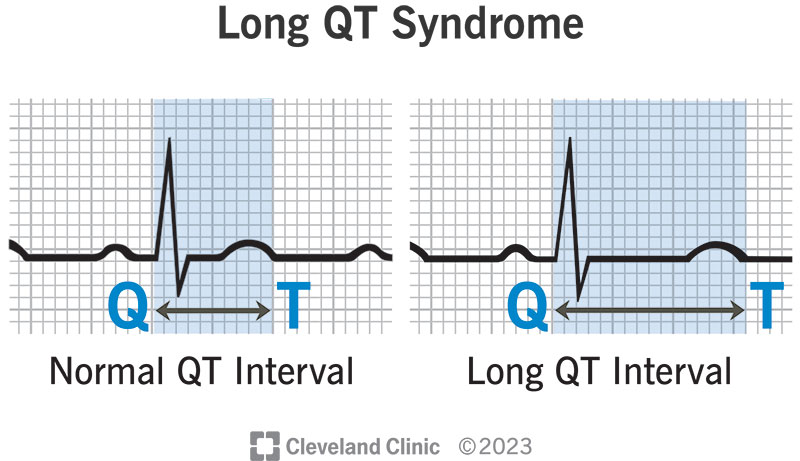A Guide to Interpreting ECG Readings
The QT interval is a measurement of the time it takes for the heart to electrically depolarize and repolarize. It is measured from the beginning of the QRS complex to the end of the T wave on an electrocardiogram (ECG). A prolonged QT interval can be dangerous and can lead to a type of arrhythmia called torsades de pointes, which can be fatal.
The QT interval is affected by heart rate, so it is important to correct it for heart rate when interpreting an ECG. The most common method for correcting the QT interval is to use Bazett’s formula. Bazett’s formula is:
QTc = QT / √RR
where:
- QTc is the corrected QT interval
- QT is the uncorrected QT interval
- RR is the interval between two consecutive R waves
A normal QTc interval is less than 440 milliseconds (ms) in men and less than 460 ms in women. A prolonged QTc interval is defined as a QTc interval greater than 450 ms in men and greater than 470 ms in women.
There are many causes of a prolonged QTc interval. Some of the most common causes include:
- Medications: Many medications can prolong the QTc interval, including some antibiotics, antidepressants, antipsychotics, and antihistamines.
- Electrolyte imbalances: Low levels of potassium, magnesium, or calcium can prolong the QTc interval.
- Heart conditions: Some heart conditions, such as long QT syndrome and cardiomyopathy, can prolong the QTc interval.
If you have a prolonged QTc interval, your doctor will want to determine the cause and take steps to correct it. This may involve stopping the medication that is causing the problem, correcting an electrolyte imbalance, or treating an underlying heart condition.
QT Interval and QT Interval Correction in Practice

The QT interval and QTc interval are important measurements that can be used to assess the health of the heart. By understanding the difference between these two measurements, healthcare professionals can better interpret ECG readings and identify potential problems.
Here are some additional things to keep in mind about the QT interval and QTc interval:
- The QT interval is a dynamic measurement that can change from beat to beat.
- The QT interval is affected by many factors, including heart rate, sex, age, and medications.
- A prolonged QTc interval is a risk factor for torsades de pointes, a type of arrhythmia that can be fatal.
If you have any concerns about your QT interval or QTc interval, talk to your doctor. They can help you understand your risk factors and take steps to protect your heart health.
Conclusion
The QT interval and QTc interval are important measurements that can be used to assess the health of the heart. By understanding the difference between these two measurements, healthcare professionals can better interpret ECG readings and identify potential problems. If you have any concerns about your QT interval or QTc interval, talk to your doctor. They can help you understand your risk factors and take steps to protect your heart health.
Disclaimer: I am not a medical professional and this information is not intended to be a substitute for medical advice. Please consult with your doctor if you have any concerns about your health.
